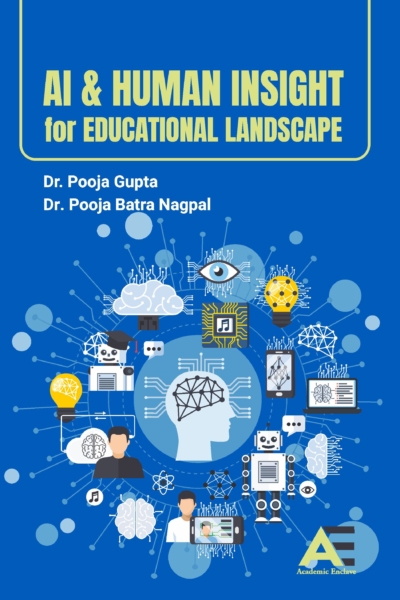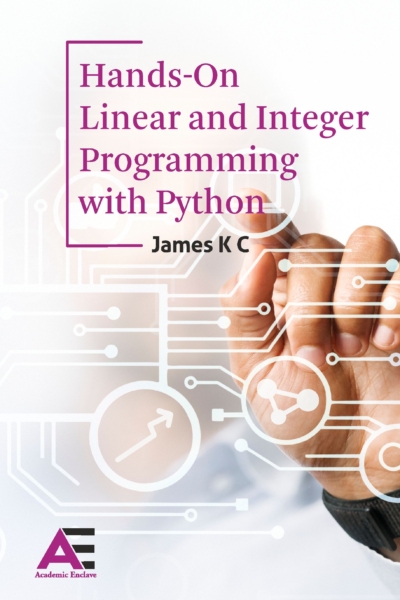Description
This book “Concept of Artificial Intelligence” is designed to provide a comprehensive introduction to AI, exploring its fundamental principles, advanced techniques, and practical applications. It serves as a resource for students, researchers, and practitioners seeking to understand the core concepts and methodologies of this rapidly evolving field. The book is structured to progressively build knowledge, starting with an introductory overview of AI in Chapter 1, which lays the foundation for understanding its historical development, goals, and impact on society. Chapter 2 focuses on problem-solving and search techniques, highlighting the algorithms and strategies that enable machines to navigate complex decision spaces. Chapter 3 delves into knowledge representation, a crucial aspect of AI that involves structuring information in ways that enable reasoning and decision-making. In Chapter 4, the book explores the intricacies of natural language understanding, discussing how AI systems process, interpret, and generate human language. Chapter 5 provides insights into the present and future of AI, examining current trends, applications, and the ethical considerations surrounding AI technologies. Finally, Chapter 6 dives into learning and adaptation in AI, presenting key concepts such as supervised, unsupervised, and reinforcement learning, alongside advanced topics like optimization and evaluation. Whether you are a beginner or an experienced professional, this book aims to offer a balanced mix of theoretical understanding and practical insights. By the end of this journey, readers will gain a deeper appreciation of AI’s capabilities, challenges, and its profound potential to shape the future of human society.
Dr. Manish Kumar is a distinguished academic and industry professional with over 12 years of experience in the field of computer science. Holding a Ph.D. in Computer Science, he has spent 7 years in the IT industry, where he honed his expertise in software development and project management. For the past 5 years, Dr. Kumar has been dedicated to academia, inspiring the next generation of tech innovators through his teaching and research. His passion for technology and education continues to drive his contributions to both the industry and scholarly community.
Ms. Neha Sehgal is a dedicated researcher and educator, currently pursuing her Ph.D. at IIIT Sonepat. With over six years of teaching experience, she has made significant contributions to academia through her research, publications in reputed journals, and guidance of M.Tech theses. Her work reflects a strong commitment to innovation, intellectual growth, and academic excellence. A patent holder and an advocate of continuous learning, Ms. Sehgal’s expertise lies at the intersection of research, technology, and education, making her a valuable contributor to the advancement of knowledge and innovation.
Dr. Parveen Kumar Sharma working as Associate professor in CSE department at Piet, Panipat. I have completed my Ph.D in Computer Science and Engineering from IKG PTU, Jalandhar, Punjab. I have published 30 research articles in national and international journals and 3 book chapters and 12 patents in India and 1 Grant patent from Australia . I also have work experience of teaching at UG and PG level of more than 20 years in reputed institutions.
Dr. Kamaljit Kaur was born in Kapurthala, Punjab, India. She completed B. Tech with Distinction from Punjab Technical University in 2007, and M. Tech with Gold Medal from Guru Nanak Dev University, Amritsar in 2010. She obtained her PhD degree in the field of Cloud Computing from Guru Nanak Dev University, Amritsar in 2020. From 2007 to 2008 she was employed with Dr. B. R. Ambedkar NIT, Jalandhar as Lecturer and from 2010 to 2012, she worked as an Assistant Professor at Lovely Professional University, Jalandhar. She joined Guru Nanak Dev University, Amritsar in July 2012 where she is currently working as an Assistant Professor (Senior Grade). Her research interests are in Resource Provisioning in Cloud Computing, Resiliency in Cloud Computing and Distributed Systems, Big Data, and IoT. Kamaljit Kaur has published and presented more than 50 papers in scientific journals and international conferences.
Mr. Jagvijay Singh Hailing from Ballia district of Uttar Pradesh, Jagvijay Singh holds a B.Tech (2017-2021) degree in Electrical Engineering from St. Andrews Institute of Technology and Management, Gurgaon. With over three years of experience in research and intellectual property rights, Jagvijay is currently a senior research associate and team leader. Jagvijay Singh has deep knowledge in research, publication processes, and intellectual property rights (IPR), enabling him to effectively mentor and guide both freshers and professionals in these areas. He has established strong relationship with academic institutions and universities, driven by his passion for fostering innovation and guiding individuals toward excellence in research and intellectual property. Also, Jagvijay is eager to learn new ideas, explore innovations, and stay updated with emerging technologies.
- Introduction
- Objective
- Introduction to Artificial Intelligence
- Background and Applications
- Turing Test
- Weak AI, Strong AI &Narrow AI
- Artificial General Intelligence
- Super AI
- Rational Agent Approaches to AI
- Introduction to Intelligent Agents & Their Structure
- Behavior and Task Environment
- Introduction
- Objective
- Problem Characteristics
- Production Systems
- Control Strategies
- Breadth-first Search
- Depth-first Search
- Hill Climbing and its Variations
- Heuristics Search Techniques
- Best-first Search, A* Algorithm
- Constraint Satisfaction Problem
- Means-end Analysis
- Introduction to Game Playing
- Min-max and alpha-beta Pruning Algorithms
- Introduction
- Objective
- Propositional Logic
- First-Order Predicate Logic
- Resolution Principle
- Unification
- Semantic Nets
- Conceptual Dependencies
- Frames, and Scripts
- Production Rules
- Introduction to Programming in Logic (PROLOG)
- Introduction
- Objective
- Components and Steps of Communication
- The Contrast between Formal and Natural Languages in the Context of Grammar
- Chomsky Hierarchy of Grammars
- Parsing, and Semantics
- Parsing Techniques
- Context-Free and Transformational Grammars
- Recursive and Augmented Transition Nets
- Introduction
- Objective
- Symbolic AI
- Data-driven AI and Machine Learning
- Introduction to Machine Learning and Deep Learning based AI
- Applications of symbolic and data driven AI
- Interpretable and Explainable AI
- Ethics of AI
- Benefits and Risks of AI
- Introduction
- Objective
- Introduction to Learning in AI
- Definition and Importance of Learning in AI
- Types of learning: Supervised, Unsupervised, Semi-supervised, and Reinforcement Learning
- Common Algorithms: Linear Regression, Decision Trees, Support Vector Machines (SVM), Neural Networks
- Common Algorithms: K-Means Clustering, Principal Component Analysis (PCA), Hierarchical Clustering
- Basic concepts: Agents, Environments, Rewards
- Markov Decision Processes (MDPs)
- Q-learning and Policy Gradients
- Evaluation and Optimization of Learning Models
- Cross-validation
- Hyperparameter Tuning
- Overfitting and Underfitting








Reviews
There are no reviews yet.